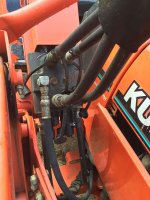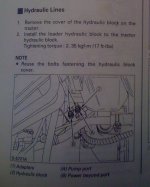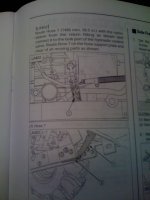rswyan
Super Star Member
- Joined
- May 12, 2004
- Messages
- 13,190
- Location
- Northeast Ohio
- Tractor
- Kubota B2910, Cub Cadet Pro Z 154S, Simplicity 18 CFC, Cub Cadet 782
I hear ya Brother ... if I cloned myself 5 times I'd still be short a few hands ...I've got a million little projects going on. Sawmilling wood, carpentry, fixit projects, maintenance. Its been raining and had burnpiles going too, and I can always find more stuff to clean up.
Yup ... our house in surrounded on three sides by woods ... everything "popped" to life (green) within the last couple of weeks.So nice to be out in the woods - right now everything's green, vibrant, wildflowers out in force and you can almost hear the trees getting thicker.
A big part of what I love about it - beyond the greenery and plant life - is the birds ... their cacophony is usually incessant ...
I love the Life of it ...
Sounds like funAnd my burnpiles, they seem to command respect, and gifts, incessant gifts. All I can say is it's really great exercise, and I can huck a stick farther than anybody and get it to land exactly in the intended location on the pile.
You betcha ...Thanks for that pic RS.
The FEL hydraulic block (not the valve) is located at the top, towards the center in the picture you provided. Two hoses are shown connected to it.My hoses go forward to this little rectangular unit, which I did not investigate (yet).
It is possible that your B7800 lacks the holes/machining to actually have a rear hydraulic block installed ... the B7800's may not have come with them (the holes) ... on that count, I dunno ...
If that is the case, then one would use the FEL hydraulic block as the source for any (external) hydraulics ... so the use of that FEL hydraulic block isn't, in and of itself, necessarily an incorrect way to do it.
The potential problem lies in how one actually plumbs the thing. Like most things of a technical nature, there is a correct way to do it, and an incorrect way.
However, unlike most things, doing some things the wrong way with hydraulics can have some pretty serious consequences ... even potentially deadly consequences. And fluid injection injuries are pretty nasty things.
As I understand it, in an open-center hydraulic system, things (valves mainly) are plumbed in series ... and valves have three connections, beyond the valve connections (aka "A/B work ports") that supply the devices the valves are controlling.
The three connections are:
1. Inlet/Supply
2. Power Beyond to feed any valves downstream (high flow, high pressure)
3. Outlet/Return to tank/reservoir (high flow, low pressure)
The reason for the 3rd item above is that most valves typically don't like to have their outlets (the return) pressurized to any significant degree.
It is certainly possible to do things in a technically incorrect manner and have them "work" ... at least until they break ...
A good example of that is using a black pipe fitting - which isn't designed for high pressure - in a place on a hydraulic system where high pressure will be present. It may work for a time ... until it ruptures or explodes ...
Beyond the safety aspect, there is the issue of (permanently) placing a (constant or continual) restriction (or multiple restrictions) in the flow path of a hydraulic system. Dunno for sure - and maybe someone better informed than I will chime in - but I would think that that perhaps might not be a good thing, for various reasons.
I assume that you - like most on TBN - are not a man of unlimited means and do have at least some interest in ensuring that you don't tear up or damage your equipment ... particularly as a consequence of someone else's stupidity ...
Probably not ... usually - at least in my experience - with TnT one is looking for less flow ... in order to slow things down, to afford more precise control.Your incredulity piques my interest and I will look further, what that square block is. What would I use 6 gpm (vs 4.5) for that will benefit me? I don't recall tapping my foot waiting for the TnT.
Only you can answer that:What gpm do I "need" for a splitter for example?
How fast do you wanna go ?




